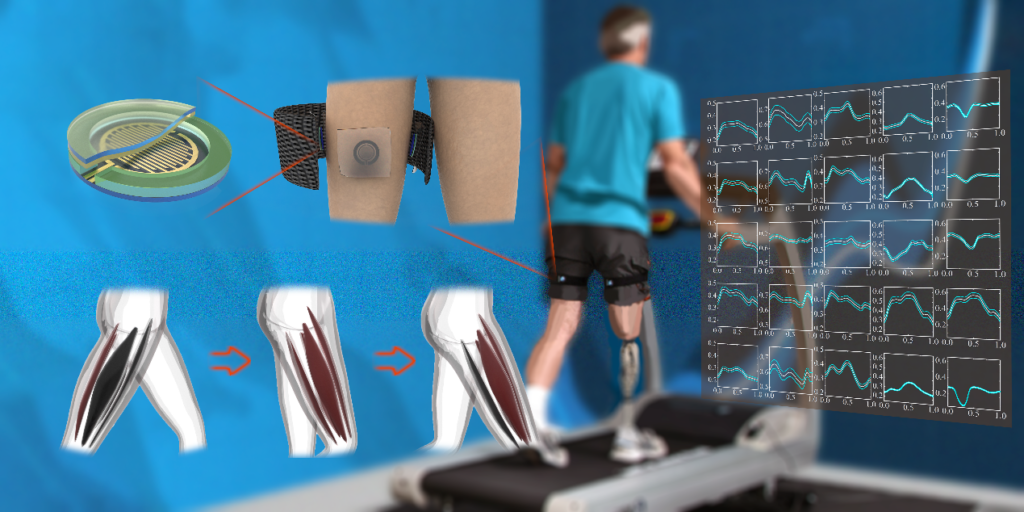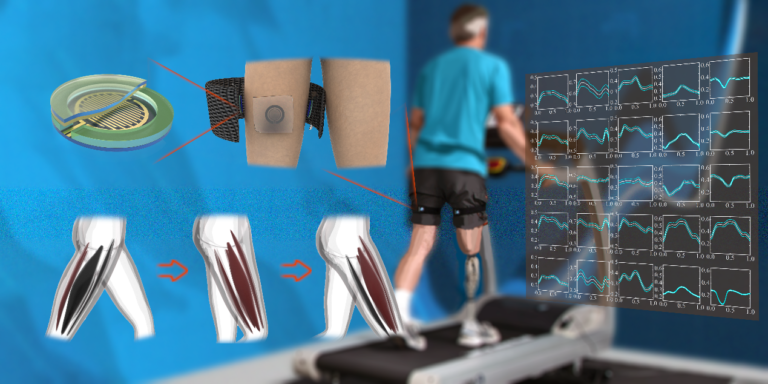Author (s): Zou, Peikai; Wang, Yaxin; Cai, Huaxuan; Peng, Tao; Pan, Tingrui; Li, Ruya; Fan, Yubo

Human motion recognition with high accuracy and fast response speed has long been considered an essential component in human-machine interactive activities such as assistive robotics, medical prosthesis, and wearable electronics. The force myography (FMG) signal has been the focus of much investigation in the search for a reliable and efficient muscular locomotion recognition system. However, the effect of the sensing system on FMG-based locomotion classification accuracy has yet to be understood. This study proposed a novel FMG sensing strategy for human lower limb locomotion classification based on flexible supercapacitive iontronic sensors. Benefiting from the ultrahigh sensitivity (up to 1 nF/mmHg) and low activation pressure (less than 5 mmHg) of the supercapacitive iontronic pressure sensor, FMG signal can be acquired accurately from 5 iontronic sensors strapped to the thigh. In the experiment with 12 subjects, the real-time classification strategy based on sliding window and SVM model gave an average locomotion classification accuracy of 99% for seven categories, including sitting, standing, walking on level ground, ramp ascent, ramp descent, stair ascent, stair descent. Compared with traditional FSR sensors, the result showed that iontronic sensors improved the classification accuracy by up to 10 percentage points in the case of short time window. The implementation of the high sensitivity flexible iontronic sensors in the wearable system brings a valuable tool for detecting small human body pressure signals and has great potential to improve the performance of the human-machine interface in rehabilitation and medical applications.

